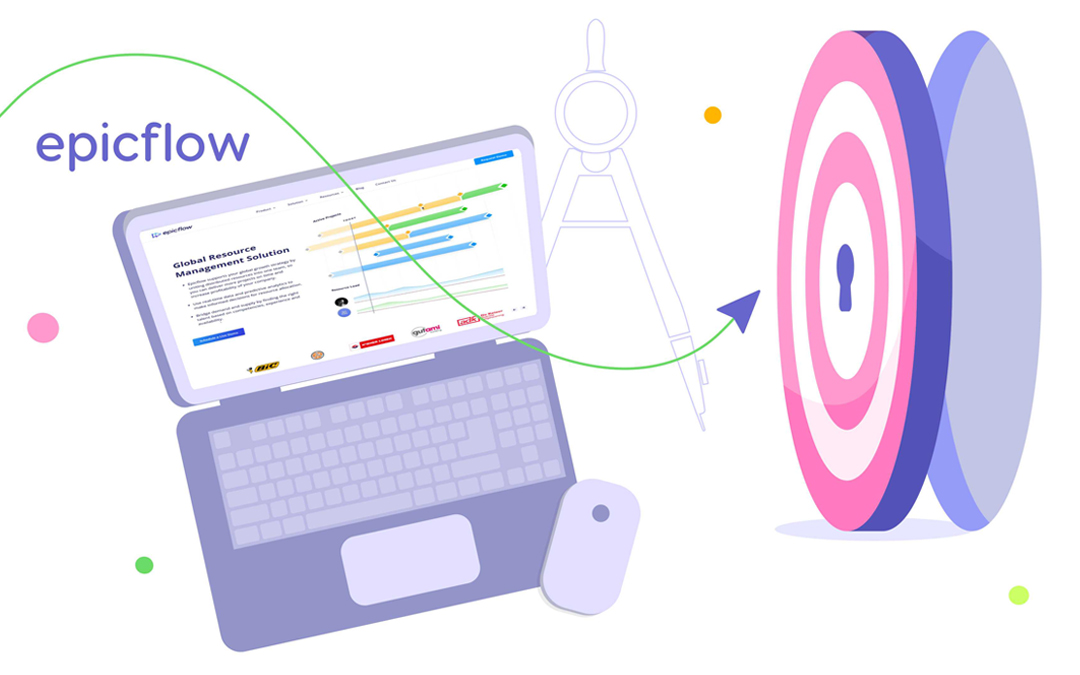Project management in engineering is a complex process that requires the intelligent coordination of both engineering processes and project management activities.
What do you need to know to manage engineering projects effectively?
Our guide will help you dive deeper into the fundamentals of engineering project management, navigate its complexity, and still deliver engineering projects successfully.
What is Engineering Project Management?
Engineering projects deal with the design, development, and implementation of processes or technologies; they can be executed in civil, mechanical, software, or electric engineering: e.g., designing buildings, creating new devices, implementing manufacturing automation systems, etc.
Engineering project management involves coordination and control of projects in the engineering domain. Leading engineering projects to successful delivery requires the application of both project management and engineering approaches. On the one hand, engineering project management steps are the same as those for projects in other industries: planning, scheduling, allocating resources, managing stakeholders, monitoring, etc. It’s important to note that effective project management in this domain requires a focus on the technical side of projects and their compliance with regulatory standards.
Project management and engineering management are related. Let’s look at the differences and roles of these two disciplines.
Project Management vs. Engineering Management
As we know, project management involves planning and executing projects and coordinating all related activities: managing resources, project schedules, budgets; monitoring and controlling, etc. The main goal of project management in any domain is completing projects on time, within budget, and in line with stakeholders’ expectations.
As for engineering management, it’s a broader discipline bridging technical aspects of engineering with business and management. Its main purpose is to ensure the seamless operational performance of engineering companies, including managing engineering teams, strategic planning, solving engineering problems, overseeing engineering projects’ completion, and ensuring that the goals of an engineering organization are met.
Therefore, engineering project management can be regarded as a subset of engineering management. The latter is responsible for supervising all aspects of an engineering organization (or department), while project management for engineering is rather focused on completing individual projects run by an engineering company.
Now that the difference between project management and engineering disciplines is clear, let’s consider what methodologies are used by engineering project managers.
Engineering Project Management Methodologies

Engineering project management utilizes typical project management methodologies taking into account the nature of projects, their size and complexity, duration, and the industry standards. Selecting an appropriate methodology for each particular project is half the battle: it can contribute to successful project delivery or, on the contrary, hamper its completion. Here’s a brief overview of the most common methodologies used for managing engineering projects.
1. Waterfall methodology.
Waterfall is a linear and sequential approach to project management. It involves breaking down a project into phases provided that each phase cannot start before the previous one is completed. This approach is mostly suitable for complex projects with strict requirements or with clearly defined stages, for example, civil and mechanical engineering. This is explained by the fact that Waterfall project phases align with engineering phases: e.g., gathering requirements, design, implementation, testing, etc. What is more, Waterfall is a predictable methodology, which is a benefit for technically complex engineering projects. Finally, this approach involves documentation, which also aligns with the specifics of the engineering process.
2. Lean methodology.
The main characteristics of the Lean method for project management involve reducing waste, increasing efficiency, and improving project performance. It was initially invented for the manufacturing industry but is widely used for managing engineering projects as well. Here’s an overview of the main principles of this approach:
- Muda: aims to streamline project workflow by eliminating waste, e.g., overproduction, excess inventory, idle time, and product defects;
- Value Stream Mapping (VSM): visualizes the full process of value delivery (e.g., the whole construction process), which helps identify bottlenecks early on;
- Kaizen: involves implementing small changes facilitating continuous improvement;
- Jidoka: provides the ability to perform quality checks regularly;
- Just-In-Time (JIT): ensures that materials are available exactly when they are needed.
These principles can significantly improve the flow of engineering projects; at the same time, this methodology isn’t suitable for projects with strict timelines and requirements.
3. Agile methodology.
In contrast to Waterfall, Agile is a flexible iterative approach, which was initially developed for software engineering but has gained popularity in other types of engineering projects. The main characteristics of this approach are responsiveness to changes, continuous collaboration, and frequent value delivery. Although engineering projects are structured and ordered, they sometimes require flexibility, which can be achieved by integrating some elements of Agile methodology.
For example, Agile methods can be used in product design, which allows teams to make improvements based on regular real-time feedback. Also, no project is immune to changes, whether they relate to regulatory changes or new customer demands; agile’s flexibility helps teams more effectively adapt to these changes. One more essential benefit of this approach is that it involves regular testing so that engineering teams can identify potential issues early and fix them before it’s too late and too costly.
Despite all the above-mentioned benefits, Agile isn’t suitable for all engineering projects, but some of its elements can be integrated into the engineering project management process to get new opportunities and improve outcomes.
4. Critical Path Method (CPM).
This step-by-step project management technique aims to identify the longest sequence of dependent tasks in the entire project, which is called the critical path. CPM helps project managers execute projects on time thanks to detecting tasks that can delay a project if not completed on time. This also helps identify bottlenecks, allocate resources effectively, and optimize risk management. Engineering projects can benefit from CPM by achieving better predictability, allowing for careful planning and scheduling, and focusing resources on the most critical tasks without overutilizing or wasting them. Also, this method provides flexibility in executing non-critical activities, e.g., the tasks that are out of the critical path can be delayed without affecting the due date, which allows for more flexibility in resource allocation.
5. Six Sigma.
This is a data-driven and structured methodology focused on enhancing project output thanks to identifying and eliminating the causes of defects. It leverages statistical data and analytics to make more informed decisions. As data-driven decision-making and continuous improvement are essential to engineering project management, this approach can be used for some types of engineering projects, e.g., those with the demand for high-quality standards.
Here are some essential practices of Six Sigma methodology:
- DMAIC framework (Define, Measure, Analyze, Improve, Control) to identify problems;
- Root cause analysis: helps eliminate inefficiencies and streamline workflows;
- Statistical process control helps keep control over engineering processes, improve quality, and reduce variability;
- Failure Modes and Effects Analysis (FMEA) makes it possible to predict potential problems and take measures to prevent them.
As we’ve mentioned above, engineering project managers can select an appropriate project management methodology based on the industry, specifics of a particular project, its duration and complexity, regulatory requirements, team members’ preferences, and other factors. At the same time, they can apply hybrid approaches combining two or more methodologies, which allows them to reap the benefits of them and avoid limitations.
Typical Challenges in Engineering Project Management
Engineering is a complex domain involving complex processes, dependencies, technologies, regulations, and other factors, which cannot but affect engineering project management. Let’s take a look at the most common challenges that engineering project managers face.
1. Scope creep.
Scope creep denotes the uncontrolled expansion of a project’s scope without changes in project timelines and budget, and without assigning additional resources. Most often, this is a result of improper project requirements management, which can result in project delays, budget overruns, and project failure in a worst-case scenario. In engineering projects, scope creep can also be a result of conflicting stakeholder requests, rapidly developing technologies as well as dynamic nature of engineering projects, where unforeseen challenges may occur.
2. Technical complexity.
Engineering projects are characterized by a high level of complexity. First, this is explained by their multidisciplinary nature: they embrace mechanical, electrical, software, civil engineering, etc., each of which has its own principles, technologies, and methods. In addition, a great number of engineering projects require the application of advanced technologies (AI, robotics, advanced materials, etc.) that can be immature or rapidly evolving. This complexity can lead to poor coordination, errors, or delays. It also requires employees’ expertise and the ability to adapt to a rapidly changing engineering environment.
3. Vulnerability to risks.
Engineering projects can be affected by numerous risks that are sometimes difficult to identify and mitigate. First, they are vulnerable to external factors like supply chain disruptions or changes in regulatory requirements. Also, they can be affected by equipment failures which will lead to project delays and exceed the project budget. The application of advanced technologies required in engineering projects is also risky and full of uncertainty: it can lead to unexpected outcomes resulting in delays or even project failure. The list of potential risks goes on, which emphasizes the need for thorough risk management in projects of this type.
4. Resource management challenges.
Engineering project managers may face significant resource management challenges, and here are the most common reasons for them:
- A lack of employees with specialized skills.
Most engineering projects require specific knowledge and skills as well as the ability to work with digital technologies. However, there’s a lack of these experts in most industries, which makes it difficult to assign the right people at the right time.
- Sharing resources across multiple projects.
This is especially relevant for large companies running multiple engineering projects at the same time. The need to share staff, equipment, and tools results in resource conflicts and difficulties in efficient resource allocation.
- Employee retention.
Employee turnover is common for long-term engineering projects, which can hamper seamless project work and cause delays: new employees need time to get used to work and produce the expected output.
- Managing globally distributed teams.
A great number of engineering companies hire workers from across the globe. Managing distributed teams, coordinating their efforts, and allocating them to project tasks effectively can be challenging due to culture and communication barriers, different time zones, and a lack of visibility into team members’ skills, capacity, and availability.
Without proper resource management, required resources will be unavailable when needed, which will lead to bottlenecks and delays.
5. Delivering projects on time and within budget.
It can be challenging to deliver engineering projects on time and within budget. This is explained by the following factors:
- Technical complexity of engineering projects;
- Uncertainty;
- Risks related to equipment failure;
- Workforce challenges;
- Supply chain disruptions.
In fact, all of the factors mentioned in this section can affect a project’s timeline. And this list goes on—there can be changing market demands, regulatory changes, etc. And if a project is delayed, it will inevitably lead to an increase in project costs.
Handling these difficulties requires an intelligent approach which should be combined with engineering project management tools. Let’s consider the assistance of these tools in the next section.
Addressing Engineering Project Management Challenges with Epicflow

Epicflow is a multi-project resource management tool designed to meet the needs of complex multi-project environments with a shared resource pool. It’s also suitable for engineering-driven organizations running complex engineering projects that are vulnerable to risks and uncertainties and have limited resources. Its powerful capabilities help streamline resource management, simplify complex workflows, optimize decision-making, and more. Here’s how Epicflow can assist in addressing engineering project management challenges.
1. Overcoming resource shortages and enhancing resource allocation.
One of Epicflow’s missions is to optimize resource management across multiple projects. Its intelligent resource management functionality ensures efficient use of available resources in the following ways:
- By providing visibility into all resource-related information so that you can quickly find the required person;
- By allocating resources based on their skills, availability, and capacity;
- By forecasting capacity and balancing project team members’ workloads;
- By detecting and eliminating bottlenecks.
This approach makes it possible to maximize resource efficiency and overcome resource constraints.
2. Facilitating flexibility and adaptability.
As we’ve noted above, engineering projects often face sudden changes or are impacted by diverse factors that cause the need for changes. Epicflow can add to the flexibility of engineering workflows in the following ways.
- Its dynamic prioritization makes it possible to set priorities across the whole multi-project environment so that the team members cannot miss important tasks. The priorities are adjusted every time changes occur in the workflow.
- Also, Epicflow’s What-if analysis allows you to forecast the impact of changes on the workflow and make the most reasonable decisions in terms of how to address these changes (e.g., moving milestones, reallocating resources, etc.).
As a result, engineering teams will have more flexibility to adapt to changes quickly and are more likely to avoid scope creep and project delays.
3. Tackling project complexity and dependencies.
Engineering projects often have multiple interconnected phases and dependencies. Epicflow provides a clear, real-time overview of all ongoing projects from initiation to completion, their milestones, and the dependencies between them, which makes it easier to manage and control these complex workflows. It allows project managers to divide large projects into smaller phases to improve their monitoring and control. Finally, this visualization helps project managers predict potential issues and tackle them before they affect other projects in the environment.
4. Risk management support.
Epicflow helps manage risks in engineering projects by providing opportunities for performing scenario planning and risk forecasting. You can simulate various scenarios to see how different changes will impact workloads, timelines, and outcomes. As a result, you can manage risks proactively, develop effective contingency plans, and get team members prepared for potential challenges before they become critical issues.
5. Bottleneck detection and mitigation.
Identifying and resolving bottlenecks is key to ensuring resource efficiency and preventing problems, especially in a multi-project environment with dependencies between projects. Epicflow’s bottleneck detection capabilities allow you to forecast future resource bottlenecks or detect existing ones, identify the reasons for them, and come up with the most intelligent bottleneck mitigation strategy. Our solution’s AI virtual assistant Epica can even warn you of an upcoming bottleneck and suggest some ways to mitigate it. As a result, you can prevent delays in engineering projects and maintain seamless workflows.
6. Real-time progress tracking.
When working with complex engineering projects, it’s critically important to keep a close eye on project progress and resource performance to make sure that a project is maintained within time and budget limits and resources cope with their work well. Epicflow helps you track progress on both project and resource levels, which provides you with a deep understanding of each project’s health.
7. Facilitating effective communication and collaboration.
Epicflow promotes seamless collaboration between team members (including cross-functional teams) by centralizing information and being a single source of truth for all project participants. This approach helps keep everyone aligned, reduces silos, communication issues and errors, and contributes to achieving desired outcomes in engineering projects.
Therefore, Epicflow supports engineering project managers in overcoming the challenges of engineering project management, mitigating risks, optimizing resource utilization, facilitating timely project delivery, and improving project performance. To learn more about Epicflow’s capabilities and the benefits it provides to engineering project managers, book a call with our experts.
Final Words
- Engineering project management involves coordination and control of projects in the engineering domain. Leading engineering projects to successful delivery requires the application of both project management and engineering approaches.
- Engineering project management often leverages traditional PM methodologies like Waterfall, Agile, Lean, Six Sigma, CPM, or their combinations.
- Typical challenges in engineering projects involve scope creep, technical complexity, resource management challenges, vulnerability to uncertainties and risks, and timely project delivery,
- Effective engineering project management software like Epicflow can help project managers address the challenges and complexities of engineering projects with ease and ensure project success in the engineering field.

